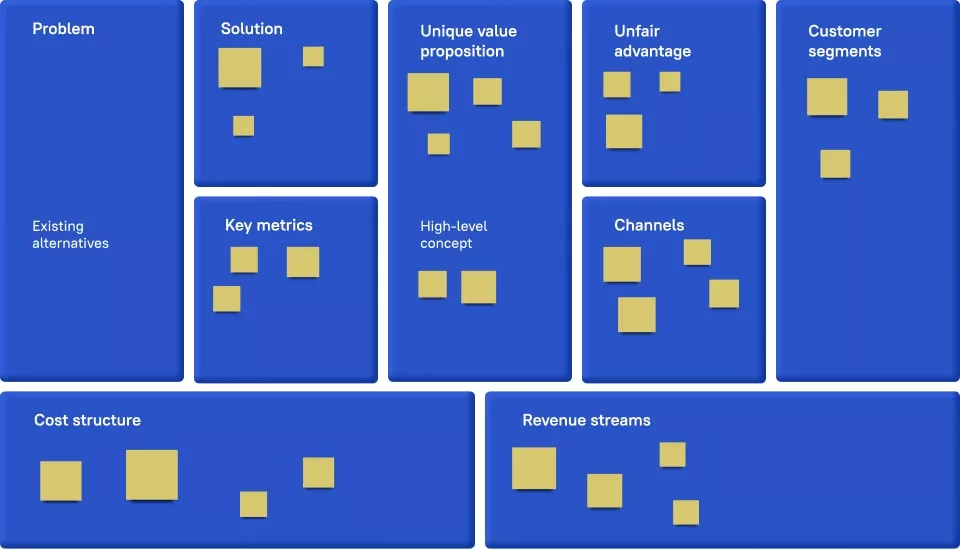
In today's competitive software market, it is not enough to develop functional products. Your software should also be user-friendly and visually appealing. This demands a holistic strategy. It covers careful planning, user-focused design, and thorough testing.
In this blog post, we'll unravel software development best practices. Discover how to improve team collaboration and code quality. Prioritizing user-centric design is also a software engineer practice.
Ready to embark on a journey of coding excellence? Let's unlock the secrets together.
Assess the Market
Before starting to develop, it is crucial to conduct detailed market research. This involves analyzing the current market trends, competition, and consumer behavior. Learn what your target audience needs, prefers, and struggles with. It will give you valuable insights that can guide your product development strategy. It will allow you to tailor your products to meet specific user demands. By using this strategy, you will increase your chances of success. Additionally, it lays the foundation for long-term success.

Clear Requirements, Clear Path
Before diving into the code, take the time to establish a solid foundation by defining the project requirements. Documenting these requirements provides a roadmap for the development process. As a result, it helps to avoid pitfalls and unexpected turns.
Include detailed descriptions of each feature and functionality of the project. This involves not only the main features but also any special cases or unusual scenarios. Engage with stakeholders, including end-users and clients. Your task here is to gain a comprehensive understanding of their needs. Try to provide clear and specific requirements. Thus, you can ensure that everyone involved understands what needs to be done.
Want a web app that does more?
Let's build a solution that's smart, sleek, and powerful.
Alina
Client Manager

User-Focused Design: Building for the People
Crafting a supreme software product begins with putting users at the forefront. Understand your target audience, their pain points, and their preferences. To build software that truly resonates, you must step into the shoes of your users. This empathetic approach, akin to becoming a user yourself, is the secret sauce for creating software that goes beyond meeting functional requirements.
The most effective way to understand your users is to become one. Use your app regularly. Thus, you can have a chance to see any bugs within the application. As you navigate through the app, assess the user experience. Are there unnecessary steps? Is the workflow seamless? A thoughtful UX enhances satisfaction and builds a connection between the user and the software.
Collaborate with a team that understands the importance of intuitiveness and ease of use in UX. Thoughtful user experience, responsive design, and attention to detail contribute to a product that not only meets functional requirements but also delights users.
Why does it matter?
- Intuitive interfaces. User interfaces should be easy to navigate. An intuitive design reduces the learning curve. It makes the software accessible and enjoyable from the first interaction.
- Enhanced user experience. A ground-breaking UX considers not only functionality but also the satisfaction of users. A positive experience fosters user loyalty and encourages them to keep coming back.
- Responsive design. You can make your software adapt seamlessly to all types of screens and devices. This adaptability enhances usability and broadens your product's reach.
Break it Down, Build it Up
Breaking the project into smaller tasks makes the development process more digestible. Manageable tasks are easier to track. When an issue arises, pinpointing and resolving it becomes more straightforward. This results in streamlining the debugging process.
Moreover, this incremental approach ensures that each phase is stable and allows for early detection and correction of issues. It's a strategy that promotes efficiency and produces a more robust end product.
Test, Test, and Test Some More
Creating a software product starts with robust testing practices. Testing is not just a checkbox. It's a continuous process that permeates every stage of development. Employ a combination of unit tests, integration tests, and end-to-end tests. Thus, you will be able to identify and fix issues early in the development cycle.
- Unit tests examine individual components of your code in isolation. They ensure that each part performs as intended. Writing unit tests may seem time-consuming. Yet, they pay off by catching bugs early, saving valuable time down the line.
- Integration tests assess how various modules or services work together. They reveal potential problems when different parts interact. This type of testing ensures that your codebase functions cohesively. It reduces the risk of integration hiccups during deployment.
- End-to-end tests simulate user interactions with the entire system. They mimic real-world scenarios, catching bugs that might only manifest when several components interact. Automating end-to-end tests saves time and provides a safety net for complex apps.
Invest in automated testing tools to streamline the testing process. These tools help execute tests consistently. They allow developers to focus on refining the code rather than running manual tests.
Embrace Continuous Integration and Deployment (CI/CD)
Automation is your ally. It speeds up repetitive tasks, decreases manual error rates, and frees up time for more creative pursuits. Automate testing, deployment, and other routine processes.
Continuous Integration is about merging changes to code into a shared repository regularly. This ensures that the codebase is continuously validated. As a result, it prevents integration issues down the line. Continuous Deployment takes it a step further by automating the release process. With CI/CD pipelines, deploying new features or bug fixes becomes a seamless process. It helps minimize downtime and enhance the user experience.
Security: A Non-Negotiable Aspect
In the age of cyber threats, security cannot be an afterthought. Incorporate security measures from the project's start.
Updating dependencies regularly is a simple yet effective security practice. Malicious actors may take advantage of security holes found in outdated libraries. Automated tools can assist in monitoring dependencies and flagging potential security risks. This allows your team to stay vigilant.
Periodic security audits by experts can uncover vulnerabilities that automated tools might miss. A proactive stance is the best defense against evolving cyber threats.
Security is a shared responsibility. Your development team should follow the best security practices and the latest threats. A well-informed team is better equipped to identify and mitigate risks.
YAGNI and KISS Development Principles
Acronyms may sound intimidating, but these three principles are the unsung heroes of software development. Let’s see what the best engineering practices in software development are.
YAGNI (You Aren't Gonna Need It). Avoid the temptation to add features that are not essential to the current development phase. Focus on what's necessary now. Let your product evolve organically based on user feedback.
KISS (Keep It Simple, Stupid). Simplicity is elegance. Complex solutions can lead to confusion and increased maintenance efforts. Embrace simplicity in design and implementation to create a product that is easy to understand and use.
Documentation: A Developer's Best Friend
Documentation has a special place among software development team management best practices. It emerges as a linchpin in effective team management. Well-documented code and APIs make onboarding new team members a breeze. Thorough documentation should include the following:
- setup guides
- architecture overviews
- coding conventions
It helps to ease the onboarding process by minimizing the learning curve. Thus, new members can contribute effectively from day one. This efficiency leads to accelerating the development process and cutting down on training expenses. Moreover, documented APIs help foster collaboration between different parts of a project or even external developers.
Beyond internal documentation, user manuals are the gateway to a positive user experience. Create guides that explain how your software works. Show common ways to use it and help with any problems. It is worth providing a comprehensive FAQ section as well.
Hire the Right People to Build a Great Team
Behind every supreme software product is a team of talented individuals working in harmony. It is important to look for individuals who have technical prowess. Yes, they also should share a passion for collaboration, communication, and continuous learning. A team committed to learning ensures your software remains innovative and adaptable. A well-rounded team is the foundation upon which greatness is built.
A well-rounded team forms the foundation of greatness. Cultural fit is crucial; seek those aligned with the organization's values. Investing in the right people is not just hiring. You want to craft a dynamic and high-performing team.
FAQ
Now you know what is included in a software development documentation best practices. It is time to dive deeper into the topic.
How do you develop a good software product?
Creating a great software product requires careful planning, clear requirements, and flexible development. Begin by understanding what users need. Use an iterative approach to constantly make it better. Write organized code that's well-documented and test it automatically. Focus on the user experience with smart design and regular feedback. Keep the software updated and secure to stay current with industry trends.
What are the stages of building a software product?
The software development lifecycle usually involves:
- Discovery & Planning. This is where you define the requirements.
- Design. This is where system architecture is conceptualized.
- Implementation/Development. It involves actual code creation;
- Testing. This stage is for ensuring functionality and identifying bugs.
- Deployment. It is time to release the product to users.
- Maintenance. You need to address issues and implement updates.
What are the key security practices you implement to safeguard software products against potential threats?
To safeguard your software products, focus on secure software development best practices. Update software for the latest defenses regularly. Use robust authentication measures, like multi-factor authentication, to fortify access. Encrypt sensitive data to add an extra layer of protection. Regular security training ensures a vigilant and informed team. You should prioritize security from start to deployment. Thus, you can fortify your software products against potential threats. You can also ensure the safety of user data and the resilience of your systems.
Conclusion
When developing software, success lies not only in code but in collaboration. At Stfalcon, we bring a wealth of experience and expertise to the table. Our commitment to user-centric design and rigorous testing ensures your software stands out in today's competitive market.
Our track record speaks volumes. We developed online booking systems, social apps, delivery apps, etc.
Join hands with Stfalcon to elevate your projects. You will benefit from our proven best practices and a team dedicated to excellence.



